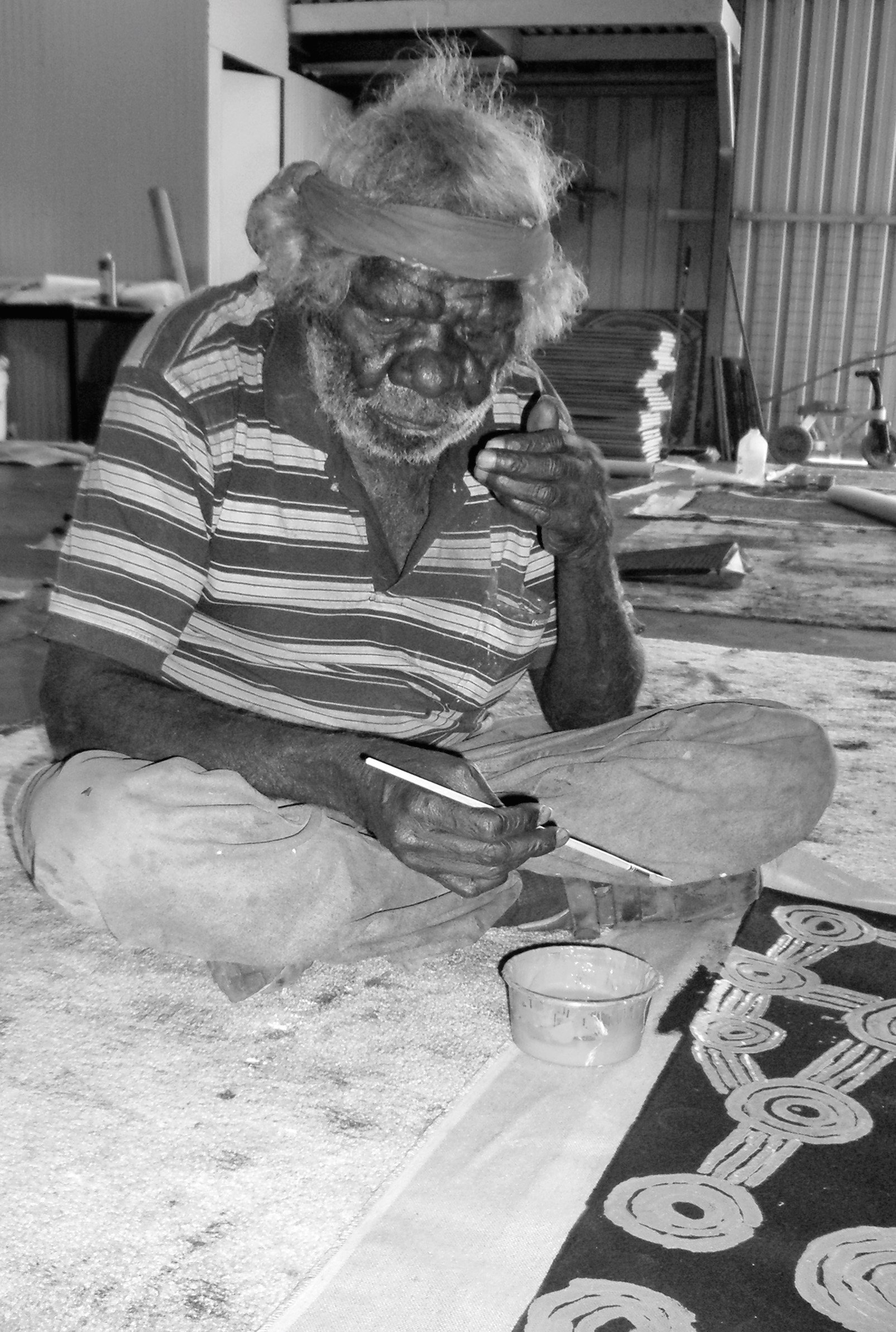WILLY TJUNGURRAYI
BIOGRAPHY

Despite his reputation as a major figure in the central desert art movement Willy Tjungurrayi did not move to Papunya from his birthplace, Patjanta, until his late 30’s, several years after Geoff Bardon had departed the community. He came in from the desert as part of a large group led by Charlie Tarawa and his camels and was trucked across to Papunya with most of the other residents of Haasts Bluff when that community was disbanded. Willy Tjungurrayi only began painting for Papunya Tula in 1976 after returning from a trip to the western desert sponsored by the Australian Institute of Aboriginal studies. He moved during the 1970’s between a number of western desert communities including Yayayi, Waruwiya and Ilyilingi finally settling in Kintore where he lived from the early 1980’s until 2003. One of three brothers born of the same father of whom Yala Yala Gibbs is the eldest and George Ward is the youngest, Willy raised Joseph Jurra Tjapaltjarri while living at Kintore within this close family group. Here he continued painting the delicate classic Pintupi grids of interconnecting rondels and Dreaming tracks that dominated his works throughout much of the 1980’s and 1990’s. These early to mid career paintings are more cartographically detailed and ethnographically specific than those he produced from 2000 onward and have been noted to embody a vibrancy that makes the “eye dance over glowing surfaces that appear to be in perpetual motion (Neale: 1994, p70),” One such work with intricate interconnecting webs of Dreaming tacks is one of his earliest, Pulpayella, created in 1976. This and other early paintings depict the sites where large groups of men gathered in the formative period establishing the song cycles, ritual procedures and ceremonies that are considered secret and sacred amongst Pintupi men to this day.
During the mid 1990’s, after having been exposed to western culture for some time, Tjungurrayi began creating paintings that married individual artistic expression with ceremonial visual traditions. He, along with George Tjungurrayi, is often cited as an artist whose more recent works are ‘distinct poetic abstractions’ in which the meanings can differ or simply do not count (Petitjean 2000, p599). This is especially so of the seemingly abstracted visceral lines of works in which duochrome images on a black background exhibiting delicate colour transitions and thereby creating an hypnotic wavering rhythm across the canvas. Though these works still make reference to the Tingari ancestor’s travelling over vast stretches of country, the symbolism is far less tangible than in his earlier works. Hail Storm at Kaakurantintja, 2002 tells of a large group of Tingari Men who travelled to this site in mythical times only to be killed by a fierce hailstorm. The painting, of oscillating linear white dots on a subdued ochre brown background, creates a textured surface evidencing a highly individual visual language used to convey his vision of the landscape through which the Tingari travelled. (Petitjean 2000, p599).”
Willy Tjungurrayi’s paintings have been exhibited and collected widely in Australia and overseas. While his 1980’s works have fallen out of favour along with those of many of his male counterparts in the central and eastern deserts, his more individually distinct works of the last decade have played an important part in fuelling the growing market aesthetic for more abstracted contemporary Aboriginal painting. In 2000 he had his first solo exhibition at William Mora Galleries in Melbourne and in 2002 a second solo show with Gabrielle Pizzi. Since that time he has acted independently of Papunya Tula, painting only for the company when living in Kintore. On his frequent visits to Alice Springs he paints for a number of dealers most notably Tony Mason for whom his brother George Ward also works regularly. His recent success has been intimately connected to the spotlight placed on the output from the Papunya Tula artists following the exhibition and catalogue ‘Papunya Tula-Genius and Genesis’ at the Art Gallery of New South Wales, as well as the number of galleries that currently access his work through a variety of other sources.
© Adrian Newstead
References
Johnson, Vivien, Lives of the Papunya Tula Artists, IAD Press, 2008
Neale, M., 1994, Yiribana, exhib. cat., Art Gallery of New South Wales, Sydney.
Petitjean, G. ‘The Lines of Willy Tjungurrayi Cultural Concepts of art in Western Desert Painting,’ Art and Australia June 2000 v38 n4.

